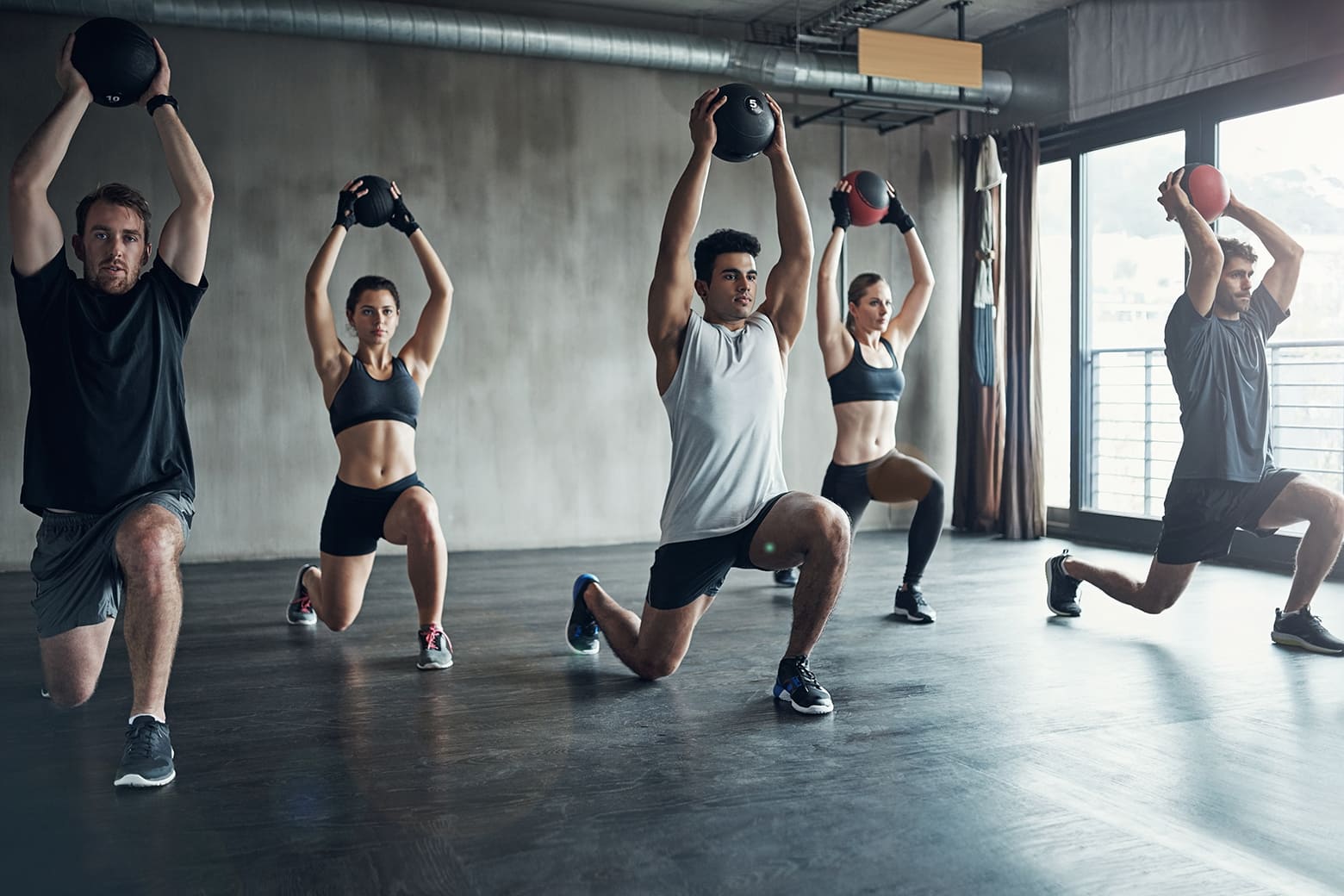by Kyle Wheeler
Have you heard of functional strength training? What exactly does that mean, and is it something you should incorporate into your fitness routine? The answer is yes! More than a buzzword in the health world, functional fitness can give you the overall strength you need to stay active throughout your life.
First off, what is functional strength? It’s what helps us physically take on the challenges we face in everyday life — carrying groceries, mowing the lawn, or climbing stairs. Without functional strength, these tasks get more and more difficult through the years, and we find we’re not able to do things “like we used to.”
The extent of functional strength you need varies by individual — some people’s lifestyles involve playing sports or running races. Others just need the strength and stamina to work in the garden or to play with the grandkids.
Training is tailored to individual needs and goals, and can be done by active older adults, elite athletes or teens and kids. Regardless of your level, functional strength can build muscle and bone mineral density that diminish as we age. It also allows you to add unique and fun movements to your activity repertoire, which in turn can stave off aging-related concerns.
To incorporate functional strength training into your routine, here are four factors to keep in mind:
- First, be fit.
Before starting a training program, establish a good base of cardiovascular health. Assess your overall fitness on your own or consult with a personal trainer. Also, don’t begin functional strength training without having done some steady resistance training using proper form.
- Explore the moves.
Functional strength exercises differ from other movements in that they engage multiple muscle groups. Instead of doing isolated exercises that may work the legs or arms, functional strength exercises incorporate broader movements that not only improve strength but also boost balance and improve joint control. Because of this, they help reduce the risk of injury you might experience in doing everyday “functional” activities.
Functional strength movements include:
- Suspension training
- Plyometric bodyweight movements
- Kettlebell training
- Mega-medicine ball training
- Battle rope exercises
- Olympic lifting
- Sandbag workouts
- Fully engaging core exercises beyond typical crunches or sit-ups
- Push-sled workouts
- High-Intensity Interval Training
- Balance work
- Stability (physio-ball) ball exercises
- Add a few moves slowly over time.
That said, don’t just jump in and try to tackle all these moves at once. Start by adding just one or two to your existing routine. For example, at the end of your current workout, try adding three 30-second sets of full-out battle rope movement. Aim to have great form — a neutral spine, tight core and stable base.
The next week, add kettlebell swings into the mix, and so on. If you choose something more difficult like Olympic lifting, make sure to do the lifts before your workout, instead of adding them on at the end. You don’t want to be doing the most difficult exercises last!
- Have fun.
As you incorporate functional strength training into your routing, celebrate the added flexibility, balance, and muscle you’re bringing to your life. Most importantly, as you train, remember to have fun. If you find you’re not looking forward to your workout, figure something else out. The beauty of functional strength training is that it comes with variations and new possibilities to explore. You don’t have to do moves you don’t care for — there are always more options.
Functional strength can keep you active and engaged and able to do the things “you’ve always done.” Stay strong!
Kyle Wheeler, NASM-CPT, is a Certified Wellness Coach and Fitness Coordinator. A personal trainer, certified pool operator, and small group instructor, Kyle has a master’s degree in exercise science and health promotion. He is a self-proclaimed nutrition nut who trains with a focus on core stability and functional strength. Kyle teaches at the Schlessman Family YMCA.

